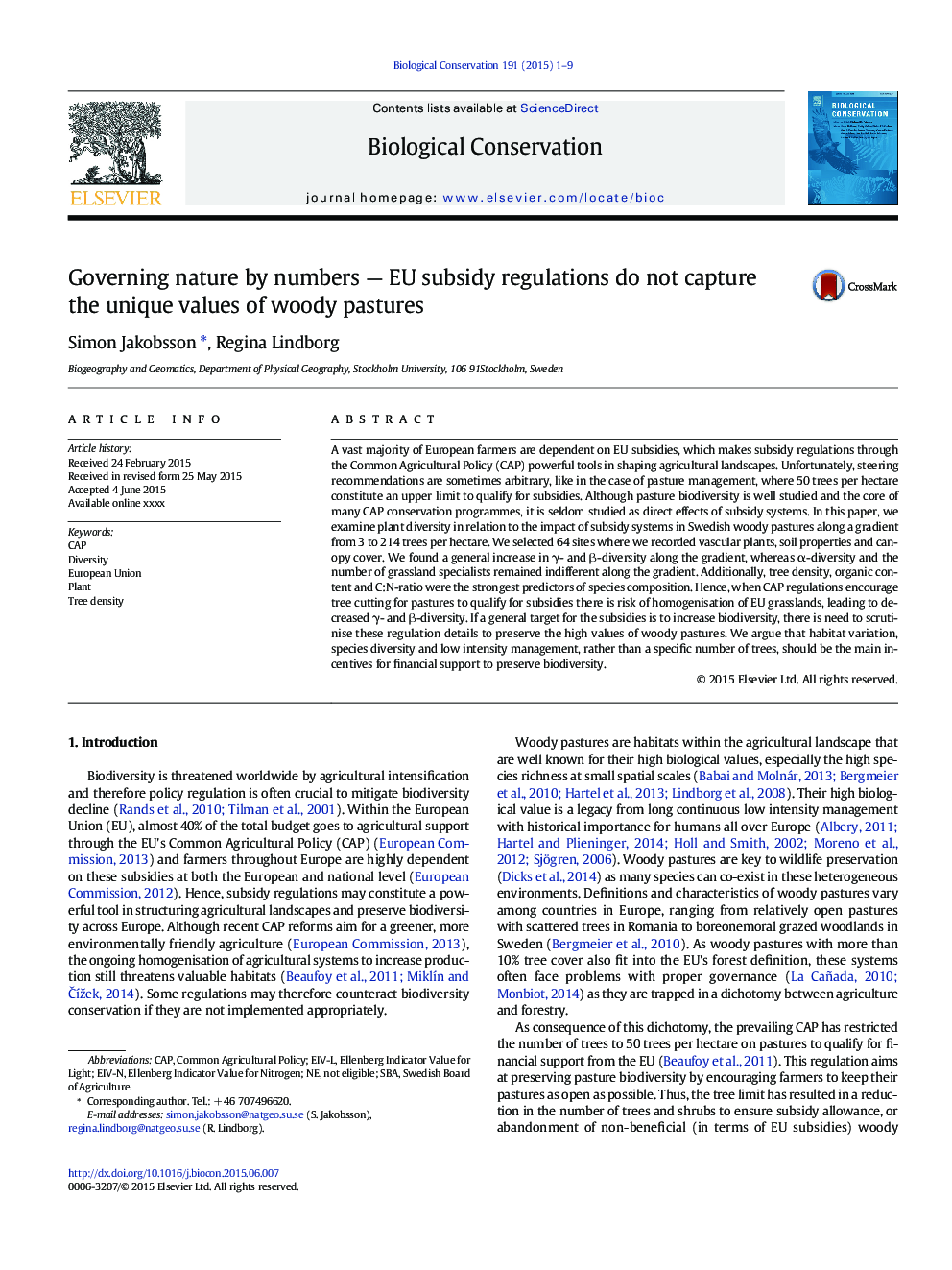| کد مقاله | کد نشریه | سال انتشار | مقاله انگلیسی | نسخه تمام متن |
|---|---|---|---|---|
| 6298903 | 1617910 | 2015 | 9 صفحه PDF | دانلود رایگان |
عنوان انگلیسی مقاله ISI
Governing nature by numbers - EU subsidy regulations do not capture the unique values of woody pastures
ترجمه فارسی عنوان
طبیعت حاکم بر تعداد - مقررات یارانه اتحادیه اروپا مقادیر منحصر به فرد مراتع جنگلی را ضبط نمی کند
دانلود مقاله + سفارش ترجمه
دانلود مقاله ISI انگلیسی
رایگان برای ایرانیان
کلمات کلیدی
موضوعات مرتبط
علوم زیستی و بیوفناوری
علوم کشاورزی و بیولوژیک
بوم شناسی، تکامل، رفتار و سامانه شناسی
چکیده انگلیسی
A vast majority of European farmers are dependent on EU subsidies, which makes subsidy regulations through the Common Agricultural Policy (CAP) powerful tools in shaping agricultural landscapes. Unfortunately, steering recommendations are sometimes arbitrary, like in the case of pasture management, where 50 trees per hectare constitute an upper limit to qualify for subsidies. Although pasture biodiversity is well studied and the core of many CAP conservation programmes, it is seldom studied as direct effects of subsidy systems. In this paper, we examine plant diversity in relation to the impact of subsidy systems in Swedish woody pastures along a gradient from 3 to 214 trees per hectare. We selected 64 sites where we recorded vascular plants, soil properties and canopy cover. We found a general increase in γ- and β-diversity along the gradient, whereas α-diversity and the number of grassland specialists remained indifferent along the gradient. Additionally, tree density, organic content and C:N-ratio were the strongest predictors of species composition. Hence, when CAP regulations encourage tree cutting for pastures to qualify for subsidies there is risk of homogenisation of EU grasslands, leading to decreased γ- and β-diversity. If a general target for the subsidies is to increase biodiversity, there is need to scrutinise these regulation details to preserve the high values of woody pastures. We argue that habitat variation, species diversity and low intensity management, rather than a specific number of trees, should be the main incentives for financial support to preserve biodiversity.
ناشر
Database: Elsevier - ScienceDirect (ساینس دایرکت)
Journal: Biological Conservation - Volume 191, November 2015, Pages 1-9
Journal: Biological Conservation - Volume 191, November 2015, Pages 1-9
نویسندگان
Simon Jakobsson, Regina Lindborg,
